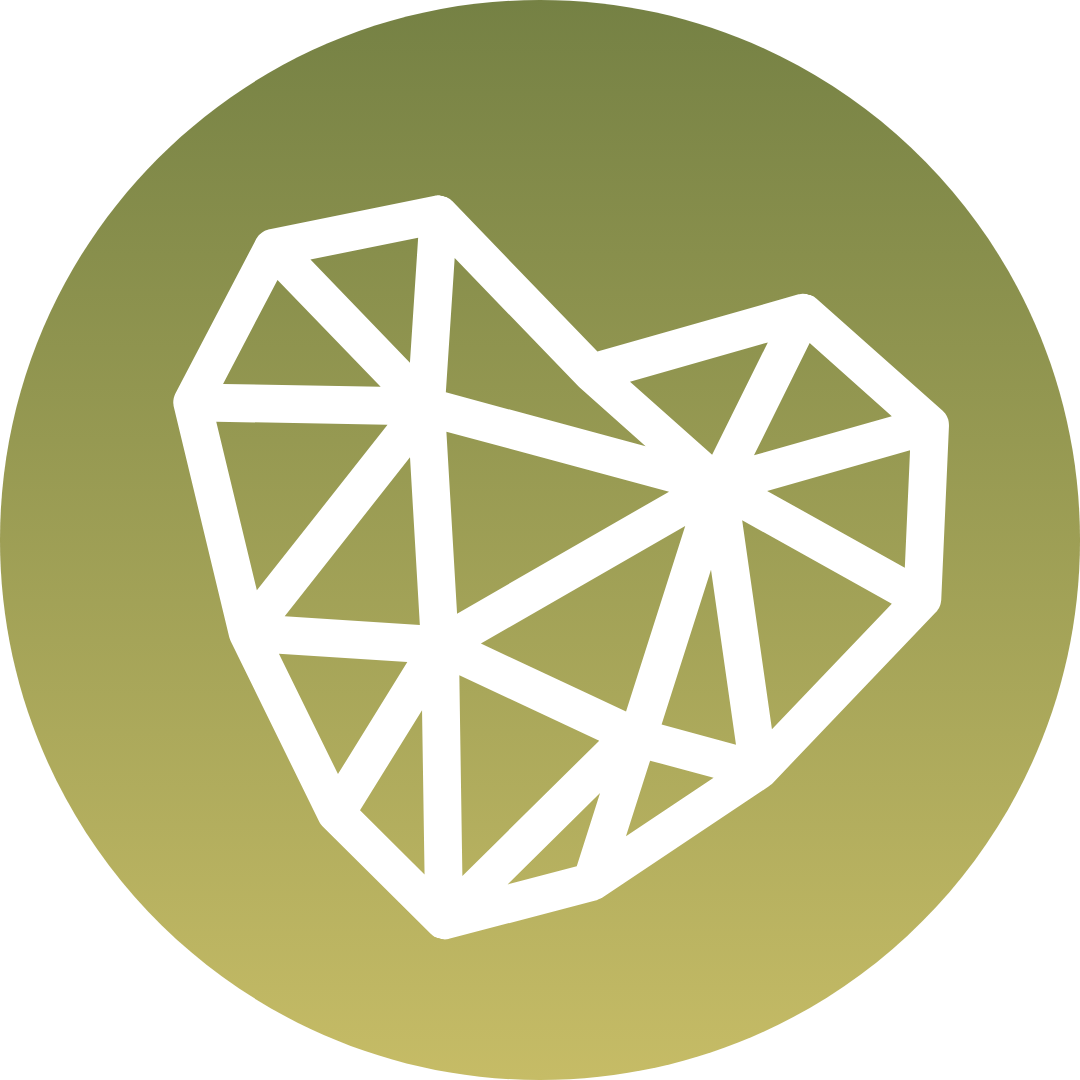What is Heart Intelligence? What is Heart Coherence? What’s the difference between Heart Intelligence and Emotional Intelligence? What does Heart Rate Variability have to do in all of this? In this article, I’ll answer all these questions and show you how to practice HeartMath’s Quick Coherence Technique.
Table of Contents
Introduction
“Have the courage to follow your heart and intuition. They somehow already know what you truly want to become. Everything else is secondary.” ― Steve Jobs
Everywhere you look, people from all religions, cultures, and ages speak about the heart as if was the true center of wisdom: ‘follow your heart,’ ‘connect to your heart,’ ‘lead from the heart,’ ‘speak from the heart,’ ‘consult your heart.’
In a world governed by ideas, belief systems, and Thought Leaders, why would anyone in their right mind choose to follow their heart? What does that even mean? Have you ever asked yourself these questions?
Perhaps Aristotle was really up to something when he embraced a cardio-centric approach to human anatomy instead of Plato’s cerebro-centric one. When he wrote, “Educating the mind without educating the heart is no education at all,” he inspired future generations of philosophers and scientists to study the heart.
The New Science of the Heart
For the past 30 years, Scientists at the HeartMath Institute and hundreds of independent researchers, including researchers in the field of Neurocardiology and research at the Noetic Sciences Institute, have been studying the heart.
And this is what their research has shown:
- The heart has a built-in, independent nervous system known as “the heart-brain” or Intrinsic Cardiac Nervous System. This system is composed of a network of approximately 40,000 neural cells that constantly communicate with the brain and process information independently, creating a two-way communication system.
- From a biophysical perspective, every heart contraction creates a fluid wave that pushes blood through the veins and arteries, providing the energetic signal that helps synchronize all the systems and cells of the body, including the brain.
- From a hormonal perspective, the heart is a hormone-producing endocrine gland, producing ANF to control blood- pressure, adrenaline, dopamine, and oxytocin (the love hormone). Oxytocin reduces fear, increases eye contact, and increases trust and generosity.
- From an electromagnetic perspective, the heart’s electromagnetic field is at least 1,000 times more powerful than the brain’s. Our heart’s electromagnetic field expands and touches those within 8 – 25 feet around us!
What science is doing is validating what our ancestral spiritual traditions, philosophers, and mystics have been telling us for thousands of years: that the heart stands at the center of a higher intelligence system that gives us access to greater intuition, super-learning abilities, a deeper connection with other and with the cosmos!
The Three Intelligence Systems
The latest scientific research shows we have a highly complex, adaptive, and fully functional neural networks or brains operating simultaneously within the human body. I like to refer to them as ‘The Three Amigos.’ They are: the head brain, the heart brain, and the gut-brain. Science refers to them as the cephalic, cardiac, and enteric brain.
Many ancient traditions also speak of three levels of intelligence that humans are born with.
For example, the Chinese Daoist philosophy speaks of three energy centers within the body known as the Three Tan Tiens: The Upper Tan Tien, located within the head brain; the Middle Tan Tien, situated in the heart; and the Lower Tan Tien in the abdomen. The Ancient Daoists called them the Emperor, the King, and the Samurai. Rudolph Steiner, the founder of the Waldorf Education system, referred to them as thinking, feeling, and willing.
The book MBraining by Grant Soosalu and Marvin Oka does a fantastic job at presenting us with all the latest science around these three intelligence systems and provides highly effective tools to tap into the wisdom from each of them.
What is Heart Intelligence?
The founder of the Institute of HeartMath, Doc Childre, defines Heart Intelligence as “the flow of awareness, understanding and intuitive guidance we experience when the mind and emotions are brought into coherent alignment with the heart.”
I agree with him. But I believe that his definition is missing the spiritual dimension we can access through our heart. After all, we have a physical heart, an emotional heart, and a spiritual or energetic heart.
Therefore, I prefer to define Heart Intelligence as a scientifically validated expanded level of awareness, understanding, and intuitive guidance we experience when our body’s physiology, mind, emotions, and spiritual essence are brought into coherent alignment through the unifying power of the heart.
When fully embodied and integrated, Heart Intelligence gives us the ability to be fully present, real, connected, and heart-directed in every area of our life. As a result, we experience higher creativity, intuition, and thinking levels. And we’re able to respond to life, people, and events in your life from a place of compassion, gratitude, and appreciation, or what I refer to as The Twelve Virtues of the Heart.
Emotional Intelligence VS Heart Intelligence
Our human reality is experienced through four dimensions: body, mind, heart, and spirit. These dimensions correspond to each of our four bodies: physical, mental, emotional, and spiritual. And each of these bodies contains within themselves a corresponding level of intelligence.
Let’s take a look at them:
Physical Intelligence is the natural intelligence of the body and each of its parts. It’s the consciousness or programming behind each cell, our DNA, and molecular structure that tells the body exactly what to do and when. This is how physical healing takes place.
Mental Intelligence, also known as IQ (Intelligence Quotient), measures your ability to think and reason. This intelligence is typically associated with the left side of your brain that thinks in terms of logic and language.
Emotional Intelligence, also referred to as EQ (Emotional Quotient), is your ability to identify and assess your emotions and the emotions of others. This intelligence is generally associated with the right side of your brain, creativity, intuition, and feelings.
Spiritual Intelligence, also referred to as SQ, is the intelligence or wisdom of the soul. Think of this as the accumulation of knowledge your soul has acquired as it journeys through different dimensions and lifetimes. It’s also the intelligence that connects us to the Greater Intelligence system we call God, Spirit, Universe, Great Spirit, or simply Life.
Even though Emotional Intelligence is typically associated with the heart – your heart is the center of your emotional system – Heart Intelligence gives you access to an expanded awareness that includes and transcends Emotional Intelligence. This is possible because your heart can unify or bring into coherent alignment all intelligence systems in the body.

How Heart Coherence Works
When fully energized, your heart can unify or bring into a state of coherent alignment all systems in your body. Scientists refer to this state as Psychophysiological Coherence, or simply Coherence. This happens because your heart is the master organ of your body. And one thing your heart is a master at is communication.
The heart communicates with the brain and the rest of the body in four primary ways:
- Neurological communication (nervous system)
- Biochemical communication (hormones)
- Biophysical communication (pulse wave)
- Energetic communication (electromagnetic fields)
When we feel love, gratitude, care, or compassion, there is greater connectivity between our left and right brains and inner ease and security feelings. In this state, the heart’s frequency shifts to 0.1 Hz. This brings the physiology of our bodies, minds, and emotions into a coherent alignment that enables us to be more present to ourselves and others.
On the other hand, when we feel stressed-out, frustrated, worried, or insecure, this diminishes the connection between the right and left hemispheres of the brain, triggering the fight-flight-freeze stress response and feelings of disconnection.
When we are coherent, we can flow with life, situations, and events and accept things as they happen. Coherence is a fluid state, a relaxed state in which you have your full attention on the here and now—you inhabit your moment, your body, and your mind most peacefully and joyfully. Research has shown that this physiological state of heart coherence helps us bypass unconscious emotional triggers and activates the pre-frontal cortex and intuitive understanding.
The Benefits of Heart Coherence
If your body is functioning in harmony, with every one of your systems working in alignment with each other, you will experience a significant improvement in your overall physical, mental and emotional wellbeing. You’ll also experience a higher level of spiritual satisfaction.
Feeling healthier and having more energy will allow you to accomplish your projects and endeavors more efficiently and overcome the challenge along the way.
The many benefits of heart coherence include:
- A reduced level of cortisol, the stress hormone
- A boosted immune system and less accident-prone
- An increased level of energy throughout the day
- An enhanced nervous, cardiovascular, and digestive system
- The release of the anti-aging hormones DHEA and Telomerase
- Improved quality of sleep and a reduced restoration cycle
- A boost in physical, mental, and emotional resilience
- Access to greater intuition and making wiser decisions
As you become more and more Heart Coherent, you’ll notice a significant improvement in your ability to focus, solve complex problems, assimilate new information, and learn new skills. It will become easier to the bigger picture of life and connect with the essence behind all things. You’ll be operating at a peak performance level often referred to as ‘Flow.’
The Four Levels of Coherence
Taking full responsibility for your level of coherence doesn’t only improve your health and psycho-emotional wellbeing but also affects everyone around you. This is due to the electromagnetic field generated by your heart constantly interacting with the larger field around you. This ongoing interaction gives rise to four levels of coherence:
Basic Personal Coherence. The individual capacity to auto-regulate one’s emotions and enter into the harmonious state of psychophysiological coherence I’ve been describing in this guide.
Advanced Personal Coherence. Also known as Fractal Coherence or Harmonic Inclusiveness, this higher level of personal coherence allows a person to establish a greater sense of connection and harmony with the whole.
Social Coherence. The harmonious alignment between friends, couples, family units, small groups, work teams, networks, or organizations where members share a common interest, objective, or goal. This requires each group person to be emotionally attuned to others so that greater connection, cooperation, and trust can exist.
Global Coherence. The harmonious alignment and cooperation between nations. This collective level of coherence promotes world peace, global connectivity, and greater collaboration between countries.
With the intention to increase Global Coherence, in 2008, the Institute of HeartMath launched The Global Coherence Initiative (GCI). This international effort seeks to help activate the heart of humanity and promote peace, harmony, and a shift in global consciousness. GCI conducts groundbreaking scientific research on the interconnection between humanity and Earth’sEarth’s magnetic fields, Schumann’s Resonance, and other planetary energetic systems.
Both Social and Global Coherence are a function of Personal Coherence. And personal coherence is a function of your heart’s ability to communicate with your brain through the vagus nerve.
The Role the Vagus Nerve Plays
The heart and the brain constantly communicate with each other through the vagus nerve. Described as the largest nerve of our parasympathetic nervous system, the vagus connects the base of the brain to the heart and the rest of our digestive organs. It, therefore, plays a crucial role in helping us achieve a slower heart rate and enter into a state of Coherence.
If you desire to maintain optimum heart and brain balance and optimum mental and emotional health, your vagus nerve must be kept in optimum conditions. This is done by what is usually referred to as vagal nerve stimulation.
You can stimulate the vagus nerve biochemically, electronically, or physically. A trained therapist or physician usually performs biochemical and electronic stimulation. You can also stimulate it naturally by doing any of the following:
- Being exposed to cold water regularly
- Practicing deep, slow breathing
- Singing, humming, chanting, or gargling
- Taking Probiotics and Omega-3 Fatty Acids
- Practicing meditation
- Physical exercise and stretching
- Massaging specific areas of the body
- Socializing and laughing
- Practicing HeartMath’s Coherence Techniques
These practices work because they positively impact your Heart Rate Variability.

What is HRV and How Does it Work?
Heart rate variability is the time variance between heartbeats. For example, if your heart rate is 60 beats per minute, it’s not beating once every second. There may be 0.9 seconds between two beats and 1.15 seconds between two others within that minute. These variations, which result from your autonomic nervous system sending signals to your heart, when tracked over time, are referred to as Heart Rate Variability or HRV.
By measuring HRV, scientists can now assess your heart’s current level of resilience, your health, and fitness level, your current level of vitality, and even predict longevity. HRV is also an indicator of behavioral flexibility, or our capacity to adapt to life’s situations, stress, and ongoing demands.
HRV is nowadays used as a marker of biological age. This is because our heart rate variability is at its peak when we are young and typically decreases as we age. Although this decline in HRV is part of the natural aging process, having abnormally low HRV for your age group is often associated with a higher risk of future health problems and premature mortality. HRV training using HeartMath coherence-building techniques can help restore low HRV to healthier values.
How does HRV Training Work?
Because Scientists and physicians nowadays consider HRV a critical indicator of our heart’s health and our ability to adapt to change and cope with life’s many demands, you must regularly stimulate your vagus nerve to increase your HRV. This is where Heart Rate Variability training comes in.
HRV training is a form of biofeedback therapy that involves feeding beat-by-beat heart rate data to a computer via a biofeedback device. It uses an ear sensor, smartwatch, or other forms of wearable device to detect variations in heart rate. These variations are then presented in a digital display or monitor.
By controlling your breathing pattern and intentionally shifting to a positive emotion, such as appreciation, care, or compassion, your heart rhythms and breathing become synchronized and create a highly coherent and healthier emotional state.
This physiological shift in heart rhythms produces an enhancing cocktail of neuronal, hormonal, and biochemical events that benefit the entire body, creating an overall sense of inner calm and ease. Blood pressure drops. Stress hormones plummet. The immune system pumps up. Anti-aging hormones increase. You gain clarity, calmness, and control and start operating at your best. You quickly become more and more coherent.
HeartMath’s Quick Coherence Technique
Want to feel confident, calm, energized, or focused? Give the Quick Coherence® Technique a try. You can practice it anytime, anywhere, without others even noticing it. In less than a minute, you’ll be able to create a noticeable change in your heart’s rhythm and experience an immediate improvement in how you’re feeling.
You can do it first thing in the morning before you plan your day, before or during appointments, client meetings, in the middle of a difficult conversation, when you feel overwhelmed or pressed for time. You can also try it when you need to make an important decision or get clear about what you want to do about a particular situation.
Try it at night before you go to bed, when you struggle to fall asleep, or when waking up in the middle of the night. This technique is especially useful when you need to concentrate for long periods, or before any activity, sport, or game that requires your complete focus and attention.
If you’d like to practice this technique, please watch the video above where I take you through a 10-minute HRV Training Session using HeartMath’s Quick Coherence Technique.
Here is the three-step process:
Step 1 Heart Focus – focus your attention on the area around your heart, in the middle of your chest. Place your hand over the center of your chest to help to keep your attention in the heart area.
Step 2 Heart Breathing – breathe slowly, deeply, and evenly through your heart. Feel and imagine as if your breath is flowing in and out of your heart. Continue to breathe this way until you find a natural rhythm that feels good to you and you can relax.
Step 3 Heart Feeling – as you focus on the heart and breathe slowly, deeply, and evenly, activate the positive feeling of care, gratitude, compassion, or appreciation. You can do this by recalling a time when you felt care or appreciation for a close friend, family member, or cherished pet—activating the feeling is the most crucial step.
Summary
There’s more to your heart than meets the eye. Your heart is the master organ of your body and plays a significant role in ensuring all other organs, glands, bodily systems, and functions stay in harmony and synchronized.
Your heart holds the key to your mental and emotional wellbeing. By developing the skills and practices that lead to Coherence and improved HRV, you’re promoting overall mental and emotional health and strengthening your capacity to adapt to change and flow with life’s ups and downs. You’re also promoting greater Social and Global Coherence.
Through your energetic or spiritual heart you can access a higher-order intelligence system that connects you to your soul’s wisdom and intuitive sense of direction in life; an intelligence that, as King Salomon writes in Proverbs 4:23 (NLT), “determines the course of your life.”
Now that you’ve learned all this, what will you do to start cultivating, strengthening, and educating your heart?
Additional Reading
- The HeartMath Solution by Doc Childre, Howard Martin and Donna Beech
- Heart Intelligence: Connecting with the Intuitive Guidance of the Heart by by Doc Childre, Howard Martin, Deborah Rozman, and Rollin McCraty
- Coherence: The Science of Exceptional Leadership and Performance by Dr. Alan Watkins
- The HeartMind Matrix by Joseph Chilton Pearce
- Resilience from the Heart by Greg Braden
- Heart Coherence 365: A Guide to Long Lasting Heart Coherence by Dr. David O’Hare
- mBraining: Using your multiple brains to do cool stuff by Grant Soosalu and Marvin Oka
- The Telomere Effect by Dr. Elizabeth Blackburn and Dr. Elissa Epel
- Accessing the Healing Power of the Vagus Nerve by Stanley Rosenberg




